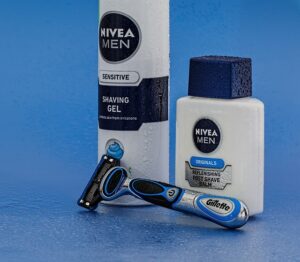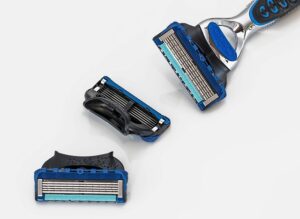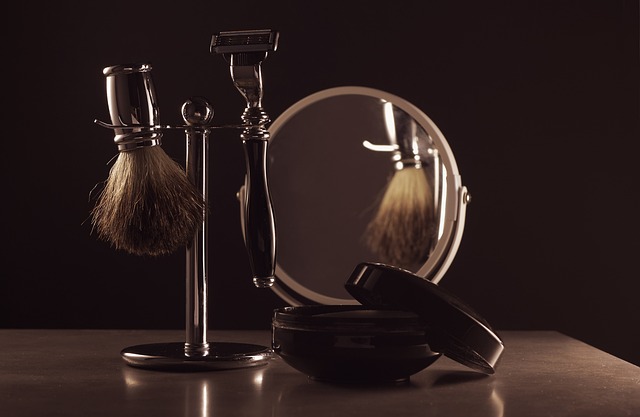Contents
- 1 Are safety razors good for pubic hair?
- 2 Cost-Effectiveness Over Time
- 3 Preparing for a Safe Shave
- 4 Step-by-Step Guide to Using Safety Razors for Pubic Hair
- 5 Safety Measures and Cautionary Tips
- 6 Aftercare: Moisturizing and Hygiene Practices
- 7 Personal Comfort Considerations
- 8 Seeking Professional Advice
- 9 Conclusion
Are safety razors good for pubic hair?
In the ever-evolving landscape of grooming practices, one particular tool has been gaining prominence for its precision and versatility – the safety razor. As personal grooming habits continue to evolve, individuals are exploring new methods for tending to their grooming needs, and safety razors are emerging as a popular choice, particularly for pubic hair grooming.
Grooming Pubic Hair with Safety Razors: A Modern Perspective
In this era of informed choices and personalized self-care, the use of safety razors for grooming has become a subject of interest. Safety razors, once associated primarily with facial shaving, are now finding their way into diverse grooming routines, including the delicate task of pubic hair maintenance.
The Rising Popularity of Safety Razors
As we delve into the nuances of grooming below the belt, it becomes evident that safety razors are not just a relic of bygone eras. They are experiencing a resurgence in popularity, driven by a combination of precision, cost-effectiveness, and an increasing desire for sustainable grooming practices.
In the sections that follow, we will explore the advantages of safety razors for pubic hair grooming, discuss effective preparation techniques, and provide a step-by-step guide to ensure a safe and comfortable shaving experience. Join us on this journey as we navigate the intricacies of grooming with safety razors in the modern world.
The Advantages of Safety Razors for Pubic Hair
As we venture into the realm of grooming below the belt, the advantages of choosing safety razors become apparent. These precision instruments, once confined to the realm of facial shaving, are proving to be invaluable tools for those seeking a refined grooming experience in more intimate areas.
Precision in Grooming
One of the primary advantages of safety razors for pubic hair lies in their precision. The design of safety razors allows for a controlled and accurate shave, offering individuals the ability to shape and groom with meticulous detail. The single, sharp blade ensures a clean cut, reducing the risk of uneven trimming common with other grooming tools.

Cost-Effectiveness Over Time
While the initial investment in a quality safety razor may be higher than some disposable alternatives, the long-term cost-effectiveness cannot be overstated. Safety razors are known for their durability, and replacement blades are often more affordable than continuously purchasing disposable razors. This makes safety razors a smart financial choice for those looking to maintain grooming habits without breaking the bank.
Eco-Friendly Grooming Practices
In an era where environmental consciousness is at the forefront, the eco-friendly aspects of safety razors contribute to their appeal. Unlike disposable razors with plastic components, safety razors are typically made from durable materials like stainless steel or chrome. This reduces the environmental impact of discarded plastic and aligns with the growing trend of sustainable grooming practices.
Reduced Skin Irritation
The design of safety razors, with a single sharp blade, minimizes the chances of skin irritation often associated with multi-blade razors. The reduced friction and fewer blades mean less tugging on the hair follicles, leading to a smoother and more comfortable shaving experience in sensitive areas like the pubic region.
In the forthcoming sections, we will delve into the crucial aspect of preparing for a safe shave, exploring techniques to ensure a comfortable grooming experience. Join us as we unravel the steps to make safety razors a trusted companion in your pubic hair grooming routine.
Preparing for a Safe Shave
Before embarking on the delicate task of grooming the pubic area with a safety razor, proper preparation is paramount. Taking the time to prepare the skin and hair ensures a smoother and safer shaving experience, minimizing the risk of irritation or discomfort.
Trimming for Manageability
The first step in preparing for a safe shave with a safety razor is to trim the pubic hair to a manageable length. Using scissors or clippers, carefully trim the hair to a length that facilitates the shaving process. This initial trimming helps prevent the razor from tugging on longer hairs, reducing discomfort during the shave.
Cleaning the Pubic Area
Maintaining cleanliness is essential for a safe and hygienic shaving experience. Thoroughly clean the pubic area before shaving to remove any dirt, oils, or bacteria. A gentle, fragrance-free cleanser can be used to ensure the skin is free from impurities that might interfere with the shaving process.
Softening the Hair and Opening Pores
To further enhance the shaving experience, soften the pubic hair and open the pores by soaking in warm water or using a warm compress. This step is crucial as it helps reduce resistance during shaving, making the hair more pliable and easier to cut. A warm bath or shower before shaving is an effective way to achieve this, promoting a smoother glide of the safety razor.
Consider Using a Pre-Shave Oil or Cream
For an added layer of protection and lubrication, consider applying a pre-shave oil or cream to the pubic area. This helps create a smooth surface for the razor to glide on, reducing friction and the likelihood of nicks or irritation. Choose a product suitable for sensitive skin to ensure compatibility with the delicate pubic area.
By emphasizing these preparation steps, individuals can lay the foundation for a safe and comfortable shaving experience with a safety razor. In the subsequent sections, we will provide a step-by-step guide to using safety razors for pubic hair grooming, ensuring that precision meets safety in the pursuit of a well-groomed and comfortable outcome.
Step-by-Step Guide to Using Safety Razors for Pubic Hair
Now that the groundwork is laid with proper preparation, let’s delve into a step-by-step guide on using safety razors for effective and safe pubic hair grooming. Follow these steps for a precise and comfortable shaving experience:
Apply Shaving Cream or Gel:
Begin by applying a generous amount of shaving cream or gel to the pubic area. This helps create a protective layer, allowing the safety razor to glide smoothly and reducing the risk of irritation.
Choose the Right Direction:
Pay attention to the direction of hair growth in the pubic area. Shave in the same direction to minimize irritation and ingrown hairs. For many individuals, this means shaving downward.
This angle ensures a close shave without excessive pressure, minimizing the risk of nicks or cuts.
Shave in Sections:
Work in small sections, especially if you are new to using a safety razor in the pubic area. Shaving in manageable sections allows for better control and reduces the likelihood of missed spots.
Stretch the Skin Taut:
To create a flat surface for the razor to glide on, stretch the skin taut with your free hand. This helps reduce the chances of nicks and ensures a smoother shave.
Take Your Time:
Shave slowly and deliberately. There’s no rush, and taking your time allows for careful precision. Quick, hasty movements increase the risk of accidents.
Rinse the Razor Frequently:
Rinse the safety razor regularly during the shaving process to remove built-up shaving cream and hair and ensure a clean blade for optimal performance.
Maintain a Comfortable Posture:
Find a comfortable posture that allows easy access to the pubic area. Consider using a mirror to aid visibility and ensure that you can see the areas you are shaving clearly.
Check for Missed Spots:
Once the initial pass is complete, check for any missed spots. If necessary, reapply shaving cream and make additional passes as needed for an even and close shave.
Post-Shave Care:
Pat the area dry gently, and consider applying a mild, fragrance-free moisturizer to keep the skin hydrated.
By following this step-by-step guide, individuals can navigate the process of using safety razors for pubic hair grooming with confidence and precision. The careful application of each step contributes to a safe and effective grooming experience. In the subsequent sections, we will delve into safety measures and cautionary tips to enhance the overall safety of the shaving process.
Safety Measures and Cautionary Tips
While the step-by-step guide provides a roadmap for using safety razors for pubic hair grooming, it’s equally crucial to implement safety measures and adopt cautionary tips to prevent potential issues. Here are essential considerations to ensure a safe and comfortable shaving experience:
Use a Sharp Razor:
Always use a sharp blade. Dull blades can increase the risk of nicks, cuts, and skin irritation.
Take Your Time:
Rushing through the shaving process can lead to accidents. Take your time to ensure careful precision and reduce the likelihood of injuries.
Avoid Applying Excessive Pressure:
Applying excessive pressure can result in skin irritation and increase the risk of cuts. A gentle, controlled approach is key.
Know When to Change Blades:
Pay attention to the performance of the razor blade. If it starts to tug or pull at the hair, it’s time for a blade change. A sharp blade ensures a smoother shave.
Be Mindful of Skin Sensitivity:
If you have sensitive skin, be especially mindful of the products you use and the techniques you employ. Consider using a hypoallergenic shaving cream and adjust your shaving routine accordingly.
Address Cuts or Nicks Immediately:
In the event of a cut or nick, address it promptly. Clean the area gently and apply an antiseptic ointment to prevent infection. If bleeding persists, use a clean cloth or tissue to apply gentle pressure.
Avoid Shaving Over Irritated Skin:
If the skin is already irritated or has existing cuts or abrasions, avoid shaving over those areas. Allow the skin to heal before resuming grooming.
Clean and Dry the Razor After Use:
Rinse the safety razor thoroughly after each use to remove any hair, shaving cream, or debris. Allow the razor to dry completely to prevent bacterial growth.
Store the Razor Safely:
Store the safety razor in a dry, clean place. Avoid leaving it in a damp environment to prevent rusting and maintain its longevity.
By incorporating these safety measures and cautionary tips into your pubic hair grooming routine, you can minimize the risk of nicks, cuts, and skin irritation. Remember that a mindful and careful approach contributes to a safer and more enjoyable shaving experience. In the upcoming sections, we will explore the importance of aftercare and maintaining hygiene for a well-rounded grooming routine.

Aftercare: Moisturizing and Hygiene Practices
Once the precision of the safety razor has sculpted a well-groomed pubic area, the journey doesn’t end there. Post-shave care is a critical component of ensuring comfort, preventing irritation, and maintaining overall skin health. Here are essential aftercare practices:
Moisturize the Pubic Area:
Post-shave, moisturizing the pubic area is paramount. Choose a mild, fragrance-free moisturizer to soothe the skin. Hydrating the skin helps prevent dryness, reduces the risk of irritation, and promotes a comfortable post-shave experience.
Use Aloe Vera Gel for Cooling Effect:
For an added cooling effect, consider applying aloe vera gel to the shaved area. Aloe vera possesses soothing properties that can alleviate any mild irritation and promote skin recovery.
Avoid Harsh Products:
Steers clear of harsh or heavily scented products immediately after shaving. The skin in the pubic area is sensitive, and using gentle, non-irritating products is crucial for post-shave comfort.
Maintain Hygiene with the Razor:
After each use, thoroughly clean the safety razor.Properly cleaning and drying the razor after use helps prevent bacterial growth and maintains the hygiene of the tool.
Replace Blades Regularly:
Regularly replace razor blades to ensure optimal sharpness and hygiene. A dull blade not only compromises the quality of the shave but can also harbor bacteria, increasing the risk of skin irritation or infection.
Avoid Tight Clothing Initially:
In the immediate aftermath of shaving, consider wearing loose-fitting clothing to minimize friction and allow the skin to breathe. Tight clothing can potentially exacerbate irritation, especially in the sensitive pubic area.
Practice Good Overall Hygiene:
Maintain good overall hygiene practices, especially in the days following shaving. Regular bathing or showering helps keep the area clean and reduces the risk of irritation.
Address Irritation Promptly:
If any redness or irritation persists after shaving, address it promptly. Applying a gentle, hypoallergenic soothing cream or avoiding further shaving until the irritation subsides can aid in the healing process.
By incorporating these aftercare practices into your grooming routine, you contribute to the overall health and well-being of the pubic area. Remember, attentive post-shave care not only enhances comfort but also supports the longevity of your grooming habits. In our concluding sections, we will explore considerations for personal comfort and the importance of seeking professional advice when needed.
Personal Comfort Considerations
Grooming practices, especially in sensitive areas like the pubic region, are highly personal. Acknowledging that personal preferences and sensitivities vary is essential for cultivating a grooming routine that aligns with individual comfort levels. Here are key considerations:
Personal Preferences Matter:
Recognize that everyone has unique preferences when it comes to grooming. Some individuals may prefer a completely smooth finish, while others may opt for a more natural look. Understanding and respecting your preferences is the first step in achieving personal comfort.
Adjust Techniques Based on Comfort:
Grooming with a safety razor offers versatility in terms of technique. If you find certain methods or directions more comfortable, feel free to adjust your technique accordingly. The goal is to create a grooming routine that aligns with your comfort and preferences.
Be Mindful of Skin Sensitivities:
Skin sensitivities vary among individuals. If you have sensitive skin, be mindful of the products you use and the frequency of grooming. Consider conducting patch tests with new products to ensure compatibility and minimize the risk of irritation.
Experiment with Product Choices:
Grooming is a personal journey, and product choices play a significant role. Experiment with different shaving creams, gels, or moisturizers to find what works best for your skin. Look for products designed for sensitive areas to enhance comfort.
Consider Hair Length Preferences:
Hair length preferences can differ widely. Some may prefer a shorter trim, while others may opt for a longer, more natural length. Consider your comfort level and adjust the frequency of grooming based on your desired hair length.
Know When to Take Breaks:
Grooming is not a one-size-fits-all process. If you experience any discomfort or irritation, know when to take breaks. Allowing the skin to rest and recover is crucial for maintaining long-term comfort and skin health.
Communicate Openly About Preferences:
If grooming is a shared experience, communicate openly about preferences and comfort levels with any partners involved. Mutual understanding ensures a respectful and considerate approach to personal grooming choices.
Encouraging individuals to prioritize their comfort in grooming practices fosters a positive and personalized approach to self-care. The aim is not only to achieve a desired aesthetic but also to create an experience that aligns with one’s comfort and well-being. In our final section, we will touch upon seeking professional advice and the importance of understanding individual skin types for a holistic approach to grooming.
Seeking Professional Advice
While personal grooming is a highly individualized practice, there are instances where seeking professional advice can provide valuable insights and personalized recommendations. Here’s why considering expert advice, especially from a dermatologist, is a prudent approach:
Individual Skin Types Vary:
Each person’s skin is unique, with its own set of characteristics and sensitivities. Understanding your skin type is crucial for crafting a grooming routine that promotes both efficacy and comfort.
Dermatologist’s Expertise:
Dermatologists are experts in skin health. Consulting with a dermatologist allows you to tap into their knowledge and experience. They can provide insights into your specific skin type, and potential sensitivities, and recommend products or techniques tailored to your skin’s needs.
Addressing Skin Conditions:
Individuals with pre-existing skin conditions, such as eczema or psoriasis, may benefit from professional advice. A dermatologist can offer guidance on grooming practices that address specific skin conditions without exacerbating them.
Personalized Recommendations:
Dermatologists can provide personalized recommendations based on your skin’s unique characteristics. This may include suggestions for suitable shaving products, moisturizers, or grooming techniques that align with your skin’s needs.
Guidance for Skin Sensitivities:
If you experience skin sensitivities or allergic reactions to certain grooming products, a dermatologist can help identify potential allergens and recommend hypoallergenic alternatives.
Long-Term Skin Health:
Grooming practices can impact long-term skin health. Consulting with a dermatologist ensures that your grooming routine contributes positively to your skin’s health, preventing issues such as ingrown hairs, irritation, or infections.
Professional Oversight for Concerns:
If you have specific concerns about your skin’s reaction to grooming, seeking professional oversight is crucial. Dermatologists can diagnose and address any issues, providing tailored solutions for a healthier skin experience.
By considering expert advice, individuals can elevate their grooming routine from a routine task to a personalized self-care practice that prioritizes both efficacy and skin health. In our concluding section, we will summarize the key points discussed and encourage readers to approach pubic hair grooming with mindfulness and self-care.

Conclusion
As we conclude this exploration into the realm of grooming pubic hair with safety razors, it’s essential to recap the key insights shared and offer a conclusive perspective on theLet’s summarize the essential points and leave you with empowering guidance for your grooming journey.
Advantages of Safety Razors: Explored the precision, cost-effectiveness, and eco-friendly aspects that make safety razors a popular choice for grooming pubic hair.
Preparing for a Safe Shave: Emphasized the importance of proper preparation, including trimming, cleaning, and softening the hair for a smoother and safer shaving experience.
Step-by-Step Guide: Provided a comprehensive step-by-step guide on using safety razors for pubic hair grooming, covering aspects such as applying shaving cream, choosing the right direction, and maintaining a comfortable posture.
Safety Measures and Cautionary Tips: Discussed safety measures to prevent issues like nicks, cuts, and skin irritation, underscoring the significance of a sharp razor, taking one’s time, and adopting proper shaving techniques.
Aftercare Practices: Stressed the importance of moisturizing the pubic area post-shave and maintaining hygiene with the razor to prevent infections or irritations.
Personal Comfort Considerations: Acknowledged the variability in personal preferences and sensitivities, encouraging users to prioritize comfort and adjust grooming techniques accordingly.
Seeking Professional Advice: Suggested considering expert advice, especially from a dermatologist, to gain personalized recommendations, recognizing that individual skin types may react differently to grooming methods.
Answering the Central Question:
“Are safety razors good for pubic hair?” The answer is affirmative. Safety razors, with their precision and cost-effectiveness, can be excellent tools for grooming pubic hair when used with proper techniques and considerations for individual preferences and skin types.
Empowering Your Grooming Journey:
In the realm of personal grooming, empowerment lies in informed decision-making. As you navigate the choices in grooming tools and techniques, prioritize your comfort and well-being. Experiment with different methods, and products, and seek professional advice when needed. Your grooming routine is a personal expression of self-care and embracing it with mindfulness ensures a positive and empowering experience.
Remember, the goal is not just a well-groomed outcome but a journey that aligns with your comfort and promotes a sense of well-being. Happy grooming!





